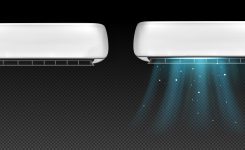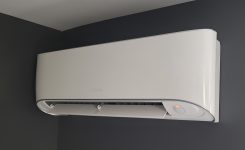Air-conditioning, Special Features, Unit type
How residential air conditioning with inverter technology works?
Residential air conditioning with inverter technology is an advanced and more efficient version of the traditional air conditioning system. Instead of cycling on and off, inverter technology continuously adjusts the compressor speed and therefore the equipment’s cooling power. This provides several benefits:







